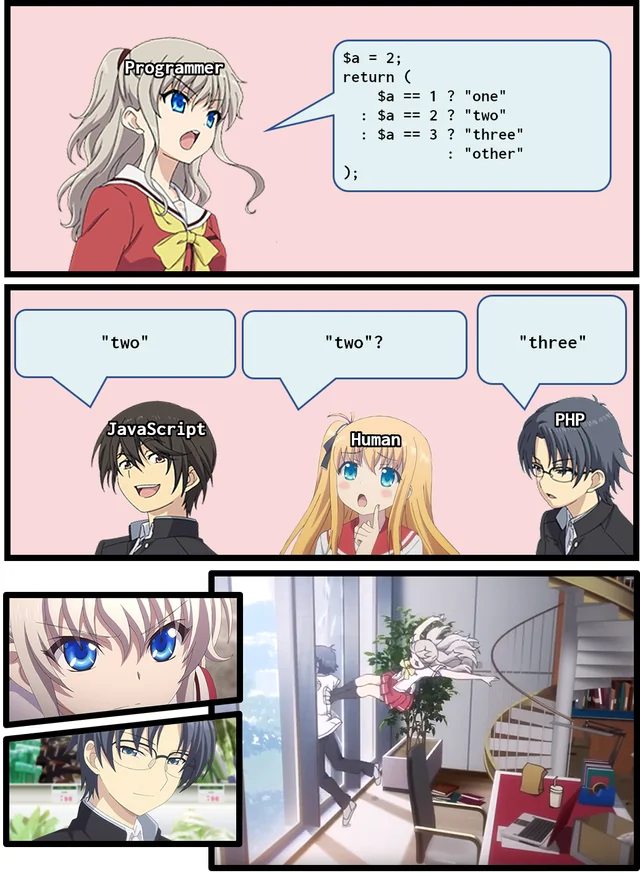this post was submitted on 14 Jul 2023
344 points (91.0% liked)
Programmer Humor
32410 readers
1 users here now
Post funny things about programming here! (Or just rant about your favourite programming language.)
Rules:
- Posts must be relevant to programming, programmers, or computer science.
- No NSFW content.
- Jokes must be in good taste. No hate speech, bigotry, etc.
founded 6 years ago
MODERATORS
you are viewing a single comment's thread
view the rest of the comments
view the rest of the comments

It's cause PHP associates the if-then-else pair only with its immediate "else" option, not with the entirety of the line.
Let's go by parts.
$a == 1 ? "one" : $a == 2 ? "two" : $a == 3 ? "three" : "other"Is $a equal to 1? If so, we're "set" to the value on the left, which is
"one", if not then we're set to the value on the right, which is$a == 2. $a is not equal to 1, so we're set to the right value,$a == 2.This replaces the relevant part,
$a == 1 ? "one" : $a == 2, with$a == 2. So we're left with:$a == 2 ? "two" : $a == 3 ? "three" : "other"Next, is $a equal to 2? If so, we're set to
"two", if not we're set to$a == 3. The comparison is true, so we're set to the value on the left,"two". The relevant part here is$a == 2 ? "two" : $a == 3only, so it replaces it with"two"cause again, PHP is only associating with its immediate pair. So now we're left with:"two" ? "three" : "other"Finally, is
"two"truthy? If so, we're set to"three", if not we're set to"other". Since"two"is truthy we're then left with"three".It's super confusing for sure.
Thank you for the great explanation, and for teaching me the word "truthy."
Thanks! I never worked with PHP but I understand your explanation. Making memes about languages is also about learning
Thank you!